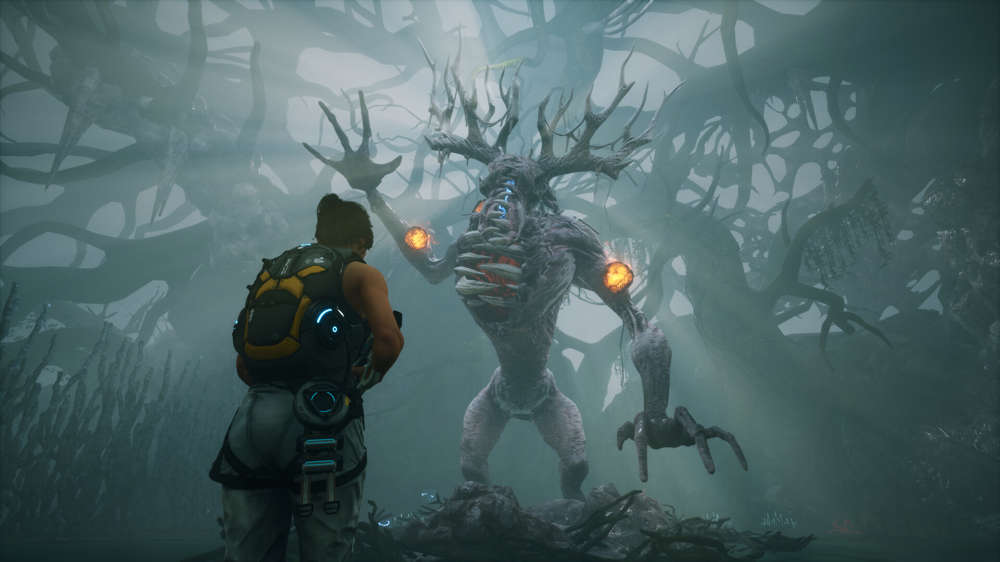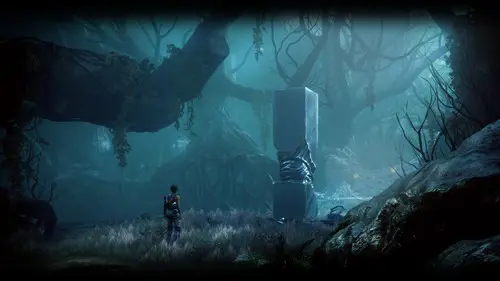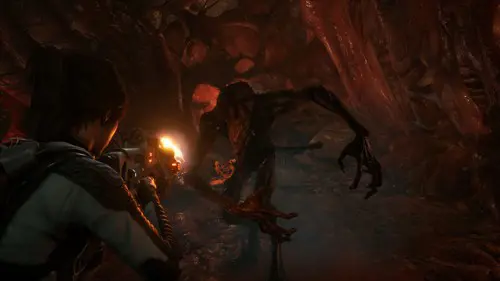Scars Above review: "An enjoyable sci-fi romp"
Scars Above may not reinvent the wheel when it comes to the third-person action genre, but it manages to pack enough fun into its brief runtime to make it worth a look for sci-fi fans.

It can be easy to sit and compare one game to another. In the case of Scars Above, it’s hard not to mention how reminiscent of Returnal it looks. Commenters on trailers of the game have already declared it a “low-budget Returnal”, however, despite the misconceptions, the similarities are few and far between.
Sure, both games feature a female protagonist on a hostile alien world, blasting their way through waves of enemies - that’s where the comparisons stop. Scars Above may not bring anything new to the table, but what it does deliver is an enjoyable AA title that scratches those nostalgic Xbox 360 and PS3 vibes.
Heavens above

Scars Above opens familiarly to anyone who has embraced the sci-fi genre over the years. You’re sent to investigate an alien artifact, things go wrong, and you find yourself stranded on an extraterrestrial planet with wildlife and environmental hazards. It’s fairly textbook and sets the stage for your adventure.
Quickly, you’ll be armoured up and ready to take on the challenges posed to you. Scars Above works as a standard third-person shooter but infuses puzzles and exploration throughout to help break up the pace. There are even a few Dark Souls-style moments where you’ll discover shortcuts back to a respawn point you’ve activated.
Combat is the main draw though, and uses elements to great effect. As you push through each biome, you’ll discover new enhancements for your weapon. This can range from electrifying foes to setting them ablaze. Initially, it may seem to have little consequence but not before long, you’ll realize that using these to your advantage is the key to survival.
Scars Above dubs itself as a “challenging” game, and in the opening hour or so, it can be. With very little equipment at your disposal, you have to play cautiously, or risk being sent back to the nearest pillar, which operates similarly to bonfires in Dark Souls. When you use one, your health and equipment is replenished, but all the monsters nearby will also respawn.
Unlike Dark Souls, you won’t be using these pillars to upgrade your character. Upgrade points can be spent on the fly, however, Scars Above makes a rather weird choice in how it distributes experience points. Instead of gaining XP from killing enemies, you instead find cubes around the world which will gift you a certain amount.
While this incentives exploration, it works as a double edge sword. For those who don’t usually venture off the beaten path, the game could prove to be devilishly difficult, whereas for players such as ourselves, we become incredibly overpowered by the time the credits rolled.
What this creates is a situation where players will most likely be forced to venture out into the world to find cubes, thus killing the feeling of natural exploration. For the most part, the game is fairly linear, but it does break some of the momentum when you’re worried you could have missed a valuable XP reward.
There are other ways to gain experience and that is by scanning numerous beasts and fauna across the world. The first time you kill an enemy, you can scan its body for a small boost of XP, whilst other environmental objects can also be scanned for the same effect. It’s just an odd choice not to reward the player for engaging in combat.
A challenging journey

Up until the first boss, Scars Above can be borderline frustrating. Your first main fight against an imposing foe could prove to be a roadblock, with its close-knit arena and unhelpful camera. It’s not until you discover the boss’ elemental weakness that things begin to click and the combat shines.
From that point onward, things ease up, and as you earn more upgrades, the combat becomes easier. Bosses boil down to shooting weak points, with most other enemies having the ability to easily be frozen and then shattered into a thousand pieces. While the lack of challenge after this point may be disappointing for some, it’s not as though Scars Above still comes with difficulty spikes.
One certain section sees you navigating an icy wasteland battling hypothermia whilst also keeping back the enemies overwhelming you. You’ll need to swap between your fire attachment to keep nearby pushes producing heat, whilst also using the elemental effect needed to keep the enemies at bay.
When everything flows, combat feels punchy and responsive, but there can be a certain bit of jank that is commonly found in budget titles. Swapping weapons isn’t the most responsive, and abilities such as healing yourself or throwing grenades can feel a little cumbersome. There’s also a late-game section that has you revisiting past areas that can be confusing to navigate and slightly drags out the 7-hour runtime.
Thankfully, situations, where this becomes a nuisance, don’t happen all too often, meaning the majority of your playthrough runs smoothly enough. It’s the sort of game where after circumstances such as these, you are reminded of just how fun it can be to play.
The verdict

Scars Above is a fairly linear game with simple controls. You won’t find anything revolutionary in how it operates, but what you will stumble across is a game that feels stripped from an older generation of consoles.
Many may think this is to be a negative point, yet, it somehow works in the game’s favour. In recent years, titles have become bloated and expensive affairs that have lost some of the magic previous generations created. There was nothing quite like finding a fairly unknown hidden gem from an older generation and quickly falling in love with it - warts and all.
In years to come, Scars Above may be the sort of game you find in a “games you missed” list, or ones that deserve more attention. It’s rough around the edge, isn’t the prettiest, and doesn’t reinvent the gaming wheel, but what it does deliver is an enjoyable sci-fi romp that may gain a cult classic status one day.
3.5/5
Reviewed on Xbox Series X. Code provided by the publisher.
Comments
